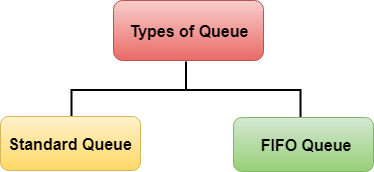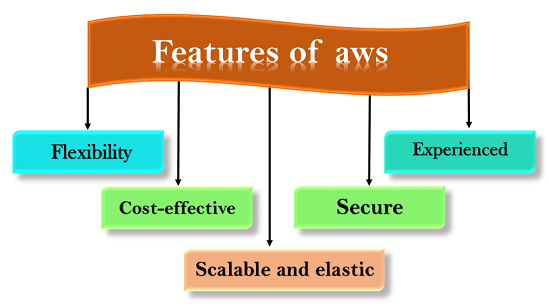
- What is AWS SQS?
- Types of Queues in SQS
- Amazon SQS Functionality
- Amazon SQS Visibility Timeout
- Benefits of Amazon SQS
- Amazon SQS Limitations and Solutions
- Companies Using Amazon SQS
- Conclusion
What is AWS SQS?
Amazon SQS became the primary carrier that brought AWS in. It offers customers the right to enter message queues. This queue is used to preserve messages while they wait to be processed. Amazon SQS allows offerings on the internet to fast queue messages, which are dispatched with the aid of using one thing to be processed with the assistance of using any other thing. AWS SQS enables sending, storing, and receiving messages without the concern of dropping them within the method. These messages can save as much as 256 KB of records as textual content in codecs consisting of JSON, XML, etc. All those messages may be retrieved by using the packages using the AWS SQS API. The SQS queue additionally resolves any troubles that arise while the thing sending messages is running much quicker than the thing that has to process the messages.
Types of Queues in SQS
Amazon Simple Queue Service (SQS) provides essential queues: standard queues and FIFO (First-In-First-Out) queues, each designed to fulfill exclusive software needs. Standard queues offer excessive throughput, permitting an infinite range of transactions per second. They help as soon as delivery, meaning messages are probably introduced more than as soon as or out of order, making them best for packages that require excessive overall performance but can tolerate occasional replica messages. On the other hand, FIFO queues make sure that messages are processed precisely as soon as and within the actual order they have been sent, making them appropriate for packages in which order and replica-unfastened processing are critical, consisting of monetary transactions and event-pushed workflows. By supplying those queue types, SQS allows builders to select the exceptional messaging answer primarily based totally on their unique use case.

Amazon SQS Functionality
Amazon SQS comes with the following functionalities:
- Users can create limitless queues with limitless messages in any specific region. The message payload in SQS can incorporate up to 256 KB of text.
- Users can send, acquire, or delete messages in a batch of up to 10 (or 256KB). Batch fees are similar to those of an unmarried message, so using batches may be a price-powerful answer for users.
- Users can lessen beside-the-point polling, minimizing fees in turn. When the queue is empty, lengthy ballot requests take up to twenty seconds for the subsequent message.
- The price for lengthy ballot requests is similar to everyday requests. Messages in queues may be retained for up to fourteen days.
- Received messages are locked simultaneously as they’re being processed. In this manner, different structures won’t be able to process the identical message simultaneously.
- In case the message processing fails, the lock expires, and the messages will come to be had again. Users can percentage queues securely with unique AWS bills or anonymously.
Amazon SQS Visibility Timeout
Amazon SQS Visibility Timeout is essentially the entire time a message stays invisible inside the SQS queue after its miles are picked up by a user. The message must be deleted from the queue if the process is processed before the visibility timeout expires. If the process isn’t achieved by then, then the message becomes seen once more with any other reader processing it. This, on occasion, has consequences inside the equal message being brought twice. The default visibility timeout is 30 seconds. If the process takes longer, this may be elevated. The maximum visibility timeout is 12 hours.
Benefits of Amazon SQS
There are four significant advantages of Amazon SQS:- Eliminate Administrative Overhead: There is no need to install, assemble, or collect messaging packs with AWS SQS. There isn’t any want to construct or retain infrastructure either. Amazon SQS queues are created as a good way to scale accordingly, and hence, they take away a big bite of administrative work.
- Reliably Deliver Messages: AWS SQS can supply any quantity of statistics without dropping any of them. It facilitates increasing the technique’s fault tolerance by using decoupling utility parts. Several copies of every message are stored on reserve in numerous handy zones, making certain that the messages are available on every occasion required.
- Keep Sensitive Information Secure: Serverside Secret Writing (SSE trades touchy statistics among apps through Amazon SQS. It also integrates with AWS Key Management Service (KMS), so we will control keys that steady different AWS resources.
- Scale Elastically and Cost-effectively: Amazon SQS is part of the AWS Cloud, so it could use its scalability characteristic when required. It scales elastically with apps.

Amazon SQS Limitations and Solutions
Even though there are several blessings of Amazon SQS, it has a few obstacles as well:
- Inflight Messages: Inflight messages are messages that are by no means deleted via way of means of a consumer after receiving them. Each queue has a restriction of 120,000 inflight messages, which goes down to 20,000 if it’s far from a FIFO queue. If too many inflight messages are in a queue, then the OverLimit blunders pop up.
- Message Size: The maximum message length is 256 KB, which is pretty low, and hence, one needs to be cautious if one wants to no longer surpass it. Whenever one enters a message that is coming near the top length restriction, the device detects it, so one usually has to go away at least 10 percent overhead at the message length.
- FIFO Queue Throughput: As already discussed, the most restricted transaction in FIFO queues is three hundred messages consistent with the second. One wishes to apply a couple of queues to conquer this restriction or increase the restriction from AWS Support.
Companies Using Amazon SQS
Several corporations use Amazon SQS. The following are only some of them:
- NASA: NASA’s photograph and video library includes over 140,000 videos, snapshots, and audio recordings. Its structure includes Amazon SQS to assist in decoupling the incoming jobs from all of the pipeline processes. It additionally includes AWS SNS, which triggers the processing pipeline as new content material is updated.
- Capital One: In their quest to modernize their retail message queuing, Capital One determined to migrate to Amazon SQS. They are using SQS to migrate essential financial institution programs to the cloud. This will help ensure excessive availability and fee efficiency.
- BMW: BMW became capable of constructing its car-as-a-sensor or CARASSO provider in six months using diverse AWS services Amazon SNS is certainly one among them.
- redBus: AWS SQS has been supporting redBus permit messaging among its outside and inner programs. It is additionally available for tracking and alerting purposes.
- EMS Driving Fuel IQ: Fuelsite, via EMS, an AWS IoT-enabled solution, supports petroleum shops in Australia by enhancing protection and performance.
- Fuelsite: It allows shops to collect statistics from the sensors positioned in provider stations. AWS IoT Device Management is used to manipulate the brink gadgets, and Amazon SQS helps with scheduling messages to and from them.
- Change Healthcare: Change Healthcare uses Amazon SQS to address exclusive transactions from its customers daily.
- Oyster: Oyster.com uses Amazon SQS to manage the system and keep snapshots for its website. SQS allows users to discuss the pictures that need to be processed and the reputation of the jobs.
Conclusion
Amazon SQS enables corporations to ship a wide variety of messages worldwide. These messages may be as much as 256 KB in size. Sending and receiving messages may be executed simultaneously. These messages may be secured using the keys generated through AWS KMS. Amazon Simple Queue Service (SQS) is a distinctly scalable and dependable message queuing carrier that permits decoupling and asynchronous verbal exchange among dispensed applications. SQS guarantees seamless information transmission, progressed fault tolerance, and improved machine resilience by offering controlled message queuing. With assistance for each general and FIFO queue, it caters to exceptional use cases consisting of high-throughput messaging and ordered message processing. Its integration with AWS services, pay-as-you-move pricing, and safety functions make it a cost-powerful and green answer for coping with message-pushed workflows. Overall, Amazon SQS is critical for constructing scalable, loosely coupled, and event-pushed architectures in contemporary cloud applications.





